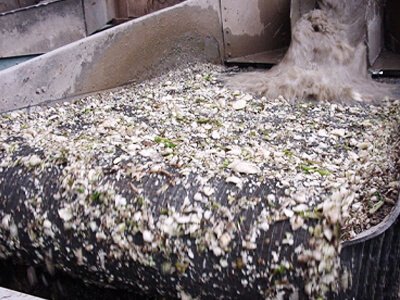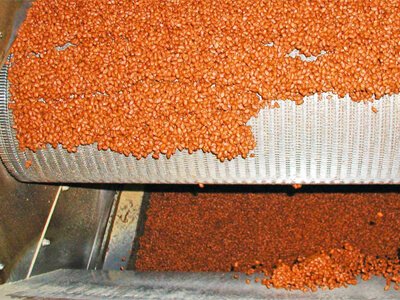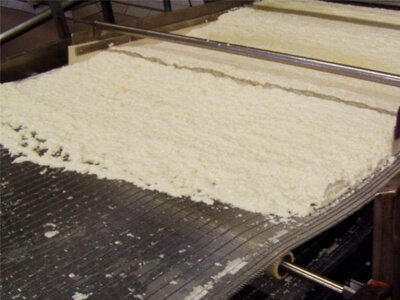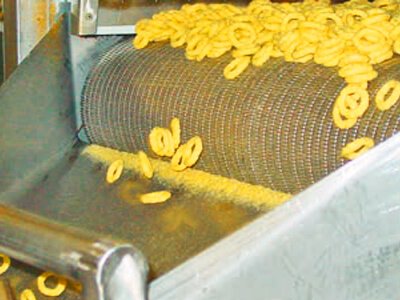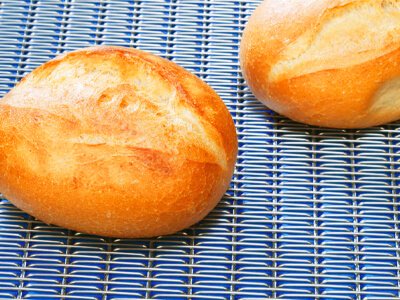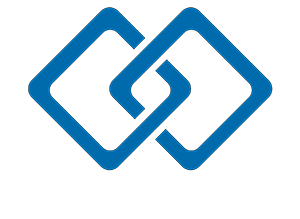Woven Rod Bar Conveyor Belts
HOME / PRODUCTS / Metal Conveyor Belts / Woven Rod Bar Conveyor Belts
Woven Rod Bar Conveyor Belts For Washing, Drying, and Dewatering Belts
Flat Top Self-Tracking Belt with a flat surface and a design that allows it to self-track, meaning it maintains proper alignment on the conveyor system without the need for an external tracking mechanism. These belts are often used in applications where precise tracking is crucial.
Cable Mesh Conveyor Belt is constructed using interwoven metal cables or wire strands, creating an open and flexible mesh. Cable mesh belts are known for their strength, flexibility, and suitability for applications requiring ventilation or drainage.
Belt Types
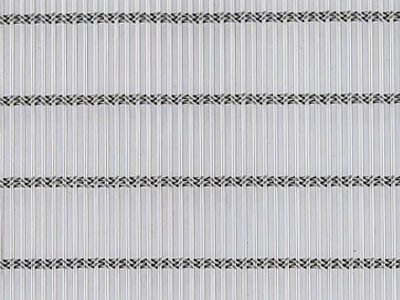

Open Cable Mesh Belts
Inter woven metal cables or wire strands create an open and flexible mesh. Suited for applications requiring airflow, transparency, and strength. Commonly used in various industries with a focus on effective drainage and ventilation.
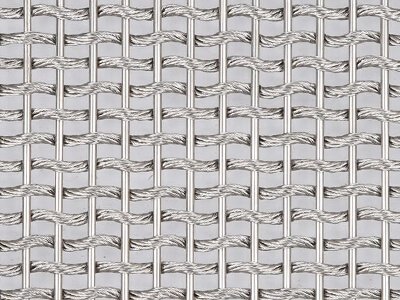

Closed Cable Mesh Belts
Similar to open cable mesh belts but with a more closed or denser mesh structure. Offers a denser mesh for better containment, making it suitable for applications where preventing small parts from falling through the conveyor is crucial.
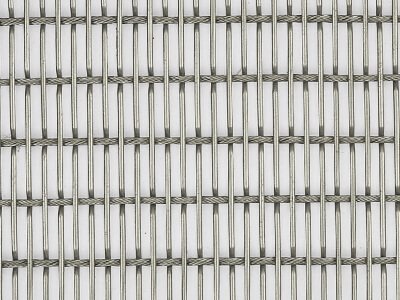

Flat Top Self Tracking Belts
A flat surface with a series of individual links connected by rods or pins. Suitable for applications requiring precise and controlled movement. Commonly used in straight-line conveyors.
Edge Availability
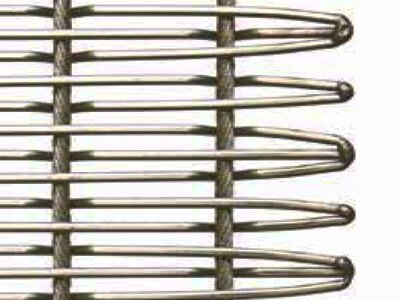

V-crimp mesh edge weld
By plasma welding them together in groups of 2 or 3, the individual wires within each group become effectively bonded. This bonding prevents the weft wires from shifting independently, maintaining the structural integrity of the belt.
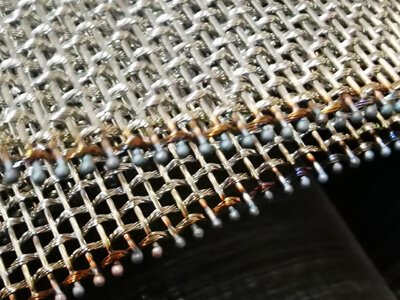

Welded edges
Warp Cable Diameter and Weft Wire Diameter are welded together to form a strong edge. As a result, the overall structure of the conveyor belt is more rigid and less prone to deformation during operation.
Seam Availability
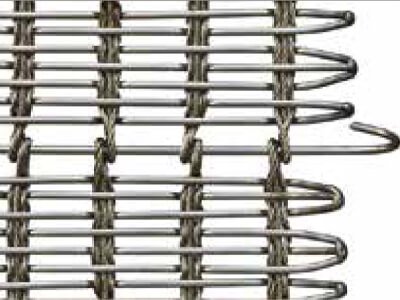

Spliced loop pin seam
The Spliced Loop Pin Seam utilizes pre-formed loops at the leading and trailing ends of the belt. A pin is inserted through these loops to create a secure connection. Joining and disassembling the belt on the machine are made easy and quick, reducing downtime during maintenance or belt replacement.
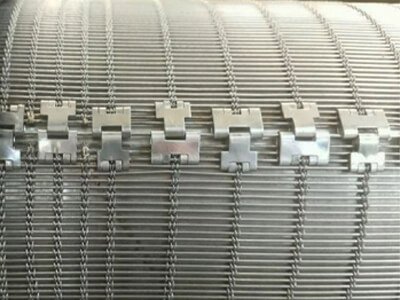

Steel clipper seam
A steel clipper seam involves using metal clips that are securely attached to the belt ends, creating a mechanical fastening system. These clips are typically made of steel and are designed to hold the belt ends together.


M clipper seam
Similar to the steel clipper seam, an M clipper seam utilizes metal clips that are shaped like the letter "M." These clips are attached to the belt ends to form a secure mechanical fastening
Common Specifications of Woven Rod Bar Conveyor Belts
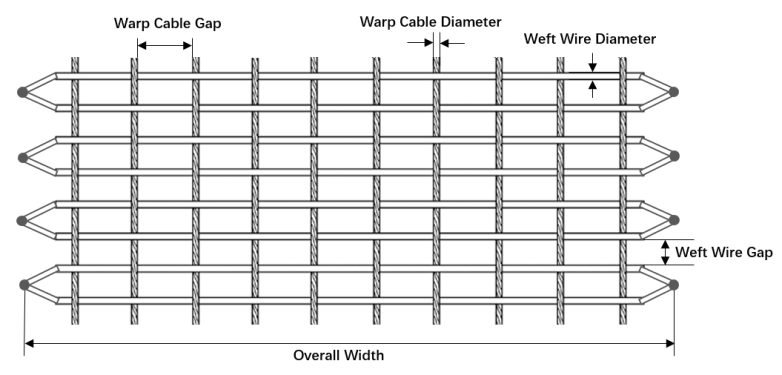

| Warp Cable Diameter | 0.8 – 2.8 mm |
| Warp Cable Gap | 2 – 30 mm |
| Weft Wire Diameter | 1.2 – 2.5 mm |
| Weft Wire Gap | 0.0 – 10.0 mm |
| Open Area | 0 – 67 % |
| Standard materials | Stainless Steel 304 316L |
| Working temperature | up to 350°C |
Woven rod bar conveyor belts offer several advantages due to their unique construction using interwoven rods or bars.
- Customization
Woven rod bar conveyor belts can be customized based on specific application requirements. This includes variations in rod diameter, spacing, and materials, allowing for tailored solutions to meet diverse industrial needs. - Ventilation and Drainage
The open mesh structure of woven rod bar belts provides effective ventilation and drainage. This feature is advantageous in applications where airflow or liquid drainage is necessary, such as in food processing or drying processes. - Flexible Design
The flexibility of the woven rod bar structure allows the conveyor belt to adapt to different shapes and contours. This is beneficial in applications where the conveyor system needs to navigate curves or irregular surfaces. - Temperature Resistance
Depending on the materials used, woven rod bar conveyor belts can exhibit high-temperature resistance. This makes them suitable for processes involving heat treatment or other high-temperature conditions. - Self-Tracking Capability
The inherent structure of some woven rod bar conveyor belts provides self-tracking capabilities, reducing the need for external tracking systems. - High Flexibility
The flexibility of the cable in the running direction considerably improves the resistance to metal fatigue, even at high speed on small diameter pulleys - Easy Cleaning and Maintenance
The open structure facilitates easy cleaning of the belt. Additionally, maintenance tasks such as visual inspections and repairs can be performed with relative ease. - Specialized Applications
Woven rod bar conveyor belts suit specific applications like conveying and drying vegetables, tobacco, green fodder, hops, etc. Their versatility enables diverse industrial applications.
The versatility of woven rod bar conveyor belts lies in their ability to handle a wide range of materials and processes. Their open mesh design allows for effective ventilation and drainage, making them suitable for applications where hygiene and cleanliness are crucial. Additionally, their customization options, strength, and durability contribute to their use in diverse industrial settings.
- Agricultural Processing
Conveying and drying of vegetables, green fodder, and other agricultural products. - Tobacco Industry
Handling and processing of tobacco leaves. - Food Processing
Conveying, baking, washing, and drying in food processing applications where ventilation and hygiene are critical. - Hops Processing
Conveying and drying of hops in the brewing industry. - Heat Treatment Processes
Usage in heat treatment processes due to their temperature resistance. - Drying and Heating Processes
Conveying and processing materials in drying, heating, and other thermal processes. - Freezing Applications
Usage in applications where freezing of products is involved.

